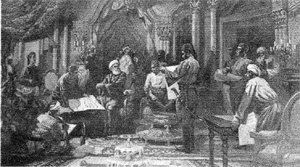THE ORIGIN OF PORT SAID AND ISMAILIA
Muhammad Ali Pasha al-Mas’ud ibn Agha was the Ottoman governor of Egypt from 1805 to 1848 and he is regarded as the founder of modern Egypt. At the height of his rule he controlled Lower Egypt, Upper Egypt and Sudan
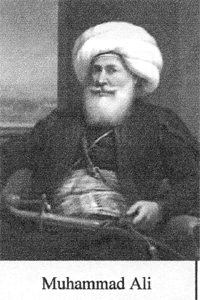 |
Muhammad Ali with officials in Cairo |
Ibrahim Pasha was the eldest son of Muhammad Ali and the unrecognized Khedive of Egypt and Sudan. He served as a general in the Egyptian army and succeeded his father, as Regent of Egypt and Sudan due to the latter’s ill health. But Ibrahim pre-deceased his father. He died in Cairo.
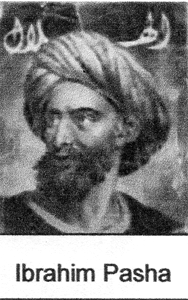 |
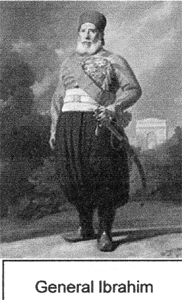 |
On Ibrahim’s death in November 1848, his brother Abbas 1 became the ruler of Egypt. During his reign, backed by the British, the railway from Alexandria to Cairo was begun. But after reigning for less than six years he was mysteriously murdered by two of his slaves. His uncle, Sa’id Pasha, the favourite son of Muhammad Ali, succeeded him.
Muhammad Ali himself had lacked the mindset and physical health needed to execute the projects that he’d conceived; including building a canal to connect East to West.
Sa’id Pasha (later Viceroy of Egypt) was influenced by the French and in 1854 he granted the Frenchman, Ferdinand de Lesseps, a concession “to form a financial company to pierce the isthmus” and operate a canal for 99 years.
A second concession in 1856 obligated the Egyptian government to provide 80% of the labour for construction of the canal.
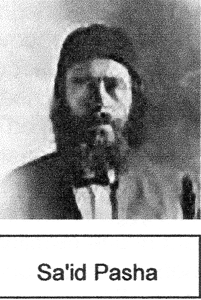 |
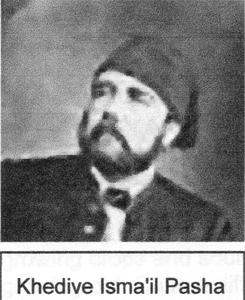 |
Sa’id’s heir presumptive, Ahmas Rifaat, drowned in 1858 when his train fell off a car float into the Nile. So when Sa’id died in January 1863 he was succeeded by his nephew Isma’il.
Port Said is named after Sa’id because the port was founded by him on Easter Monday 1859, when Ferdinand de Lesseps gave the symbolic swing of the pickaxe to signal the beginning of construction. (¹ see below)
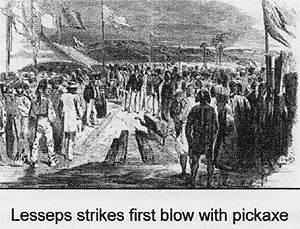
In 1859 the first 150 labourers camped in tents around a wooden shed. A year later, the number of Port Said inhabitants had risen to 2,000 with the European faction housed in wooden bungalows imported from Europe. By 1869, when the canal opened, the long-term population had reach 10,000. Ismailia was then a new town named after Isma’il.
The reign of Isma’il, from 1863 to 1879, was acknowledged as the period of modernizing Egypt. In earlier years of his reign changes regarding Egypt’s sovereignty were made. The succession to the throne of Egypt would now descend to the eldest of the male children and in the same manner to the eldest sons of these successors, instead of to the eldest male of the family as was the practice of Turkish law.
During Isma’ils reign vast development schemes were completed. He engaged the best of European contractors to construct railways, telegraphs, irrigation projects, lighthouses, the harbour works at Suez and the breakwater at Alexandria. Most important of all was Egypt’s (his and his ancestor’s) support for the Suez Canal which finally opened in 1869.
Not only had Isma’il’s government bought many shares in the project, initially intended for British investors, it provided the corvee labour to dig the Suez Canal, as well as digging a canal² (see below) to bring Nile water to the new city of Ismailia at the Suez Canal midpoint. As the reader will know only too well, 95% of the country was desert ranging from the dunes of the Sahara³ (see below) to the west and the high desert of Suez and Sinai* (see below) to the east. Many of the fellahin employed were landed peasants who would become forced labour - a role completely different from their normal routine of hard manual labour growing crops and sourcing water, getting married, having kids and growing old. Quite a different lifestyle from that of the cities of Cairo and Alexandria where Egyptians wore expensive robes, smoked hookahs** (see below) in coffee shops and were amused by snake charmers, belly dancers or games of senet (their form of snakes and ladders), dice or draughts. Others would trade their silks and spices or sell slaves in open markets.
The major settlements at this time were Company stations at Port Said, Lake Timsah and Qantara. Each consisted of a few adobe*** (see below) huts, a general store, a well and brick kilns. A few steam engines and ancient dredgers were located here and there. The site for the new town of Ismailia had been identified but nothing yet existed. When Isma’il sought to terminate Egypt’s corvee labour obligation, Egypt was made to pay more the £3 million in compensation to the Suez Canal Company. The funds helped pay for the then “hi-tech” dredging equipment bought to replace some of the labour needed to complete the canal.
But sadly this progress, coupled with his personal extravagance, led to insolvency and to the British occupation of Egypt shortly afterwards. Isma’il having repeatedly broken faith with his creditors, couldn’t raise any more loans on the European financial market. So he had to monetise hi remaining assets and among them sold 176,602 Suez Canal shares to the British government for £976,582 which surrendered Egyptian control of the waterway.
------------------------------------------------------------
Footnotes:
¹ On 25 April 1859 de Lesseps swings the first pickaxe at the northern end of the route, the site of a new harbour to be named Port Said. He is the first in a labour force soon numbering tens of thousands, who between then excavate over the next ten years about 97 million cubic metres.
²A freshwater canal that we Canal Zoners knew as the Sweetwater Canal.
³The Sahara is the largest hot desert in the world comparable to the area of China or USA.
*The Sinai Peninsula is a desert region between the Red Sea and the Mediterranean Sea. The 6th century St. Catherine’s Monastery is near the biblical Mount Sinai, as some readers who managed to get there will know
**The hookah works by burning charcoal that will then burn a tobacco mixture, as well as heat up the water. The smoke the charcoal generates helps move the tobacco through the water and hose and up to the mouthpiece.
***Adobe is essentially a dried mud brick, combining the natural elements of earth, water and sun. It is an ancient building material usually made with tightly compacted sand, clay and straw or grass mixed with moisture. It is formed into bricks and naturally dried or baked in the sun without an oven or kiln.
